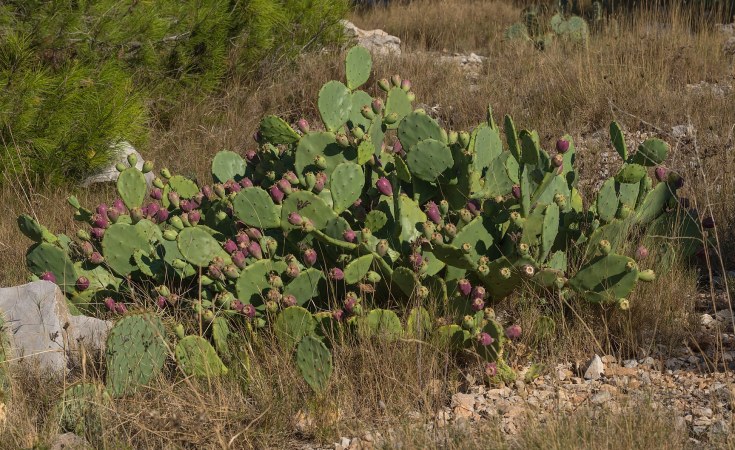Laikipia And Nairobi, Kenya — Joseph Ole Morijo is baffled by research findings that cactus plants can be used as animal fodder during drought. Not after he lost his entire herd of 152 goats and sheep to the said plant.
"It is a dangerous plant. I know it well and I have seen it ruin our livestock. It has to be eradicated completely," said Ole Morijo who hails from Laikipia, in the northern dryland of Kenya.
Even after convincing him that there existed other types of cactus that do not have spines, the pastoralist could not approve of feeding his animals the plant he has seen kill. "I cannot believe it, until I see it," he said.
The particular cactus species in the area, or Opuntia megacantha as it is scientifically known was introduced in Laikipia and other dryland areas by colonial settlers in the early 1960s mainly for fencing their farms. But in wet parts of the country, it is used for ornamental purposes.
Fruits from this particular species are edible both by humans and animal. But they have several sharp elegant glassy spines that are easily removed by people before they consume the juicy pulp. However, most animals swallow the spines, thus causing internal wounds.
"The spines prickle the entire digestive canal right from the mouth, through the throat, and to the stomach and intestines," said John Saikom, a veterinary expert in Laikipia. "Due to the injuries especially within the mouth, the affected animals find it difficult to feed anymore, and in most cases they starve to death."
But a study released in May by research experts from the Kenya Agricultural Research Institute (KARI) shows that if the right spineless species of cactus are selected, they can offer the much needed nutrition for livestock during extreme dry seasons.
"There are two main types of Opuntia: those with spiny fruits, and the spineless type. Though both of them have similar nutritional value, the spiny type poses a challenge to the farmers," said John Kang'ara, one of the lead researchers. "It means that if the spiny types are to be used as animal fodder, then farmers must take their time to remove the spines by burning or scrapping them with a machete before feeding them to animals," explained the researcher and an expert of animal nutrition.
The KARI report, which was presented at the Pastoralism and Climate Change Adaptation in Africa conference at Egerton University in Kenya, suggests that farmers should embrace spineless Opuntia species which includes the varieties of O. ficus-indica, the O. vulgaris and O. leucotricha.
But there are very few species of this type remaining in the country. According to the study, the spineless types are getting scarcer due to high demand. Both spineless and spiny cacti have been seen to survive in harsh climatic conditions, and reproduce very generously in different types of soils. Once introduced in any area, the cacti - spiny or spineless - multiply naturally like an invasive species.
"The most common are the spiny cacti, which are obviously difficult to domesticate due to their thorny nature," said Kang'ara. "There is therefore a need for the government and farmers to invest in propagating the spineless species to replace the thorny ones."
"We got interested in studying this plant as a potential fodder crop during drought after officers from the Kenya's Ministry of Health enquired to know its nutritional value. This was after an observation made in a place called Nyeri, where cows were increasingly eating it as the drought of year 2008 intensified," said Kang'ara.
During the study, it was noted that farmers in Central Kenya who fed their dairy cattle on the spineless cacti did not lose any of their animals in the severe drought of 2008-2009. Their cattle still produced some milk and were able to come on heat regularly.
Contrary to this, residents of Laikipia North said that most of their livestock animals that fed on spiny cacti developed internal wounds especially in the mouth, which caused them to starve to death.
"However, we noted that most farmers in Central Kenya were practicing zero grazing, making it easier for them to select safe species of the cacti for their animals. But in Laikipia where the animals were herded on the rangeland, they fed on any cacti plants they came across including the prickly ones," said Kang'ara.
According to the researchers, utilising what can naturally grow in dryland areas is one of the best methods of adapting to the changing climatic conditions. "Having cacti for animal feeds will save our animals from starving to death during droughts. Sheep for example can survive on cacti for 500 days without supplementation of any other pasture or even water," said Kang'ara.
Climatologists have already given a resounding warning that drylands are likely to get drier due to the global warming. According to a report appearing in the Lancet Scientific Peer Reviewed Journal, Kenya lost 40 percent of its cattle, 27 percent of sheep, and 17 percent of goats to the drought that ravaged the country between the year 2005 and 2006.
KARI has called for combined efforts between the three ministries of Livestock, Agriculture and Northern Kenya and Arid Lands to develop, promote and commercialize cactus for both livestock and human food.
"We need to educate communities that have already given up on cacti after the bad experience with the spiny species," said Kanga'ra.


